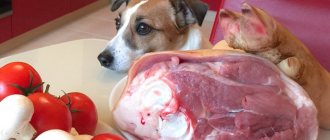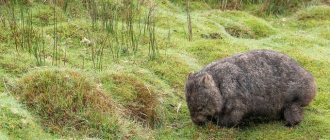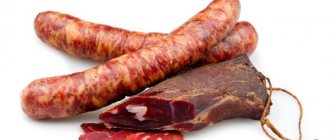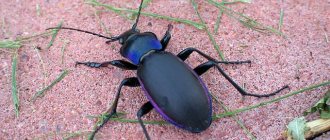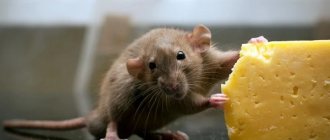For many people, a guinea pig is a cute and fluffy pet. Few people know that the history of domestication and breeding began with the use of the guinea pig as a meat animal.
In some countries, even today, fried guinea pig is a traditional and quite common dish, and in the European and US markets, the meat of this animal is a delicacy.
Guinea pig meat
For many people, a guinea pig is a cute and fluffy pet.
Few people know that the history of domestication and breeding began with the use of the guinea pig as a meat animal. In some countries, even today, fried guinea pig is a traditional and quite common dish, and in the European and US markets, the meat of this animal is a delicacy.
Nutritional Features
Guinea pigs in nature eat only plant foods. The animals find places where there is a lot of grass and settle there. Their food is:
If food supplies are exhausted in the selected area, the animals move on. If necessary, they can migrate long distances.
Attention! Rodents get a lot of moisture from succulent food, so they rarely live near bodies of water. The animals are content to drink rainwater or collect drops of morning dew from plant leaves.
Guinea pig is a source of tasty meat
Countries where guinea pigs are eaten include Peru, USA, Guatemala, France, China, Thailand, Ecuador, Colombia and Chile. The meat of this animal can also be found in expensive restaurants and supermarkets in England, Ireland and Australia. In their homeland, Peru, guinea pigs are a traditional food. Roasted guinea pigs are prepared for weddings or as an everyday dish.
The meat of these small animals is very tender and aromatic, does not contain fat, is environmentally friendly and easily digestible.
It is recommended for people suffering from diabetes, for recovery after complex operations and long-term illnesses, as a dietary supplement.
In Peru and Ecuador, the government has even developed several special programs to popularize guinea pig meat among the population. The animals are small in size, fertile, and easy to feed, which means that even poor people who are unable to have pigs or sheep can provide themselves with constant, and most importantly, valuable meat. The authorities of the countries actively help farmers - they provide each family with a male and five to eight female animals. After just a few months, the number of animals almost doubles. With good and proper fattening, local Peruvian guinea pigs already weigh more than a kilogram at three to four months.
In the USA, guinea pig meat is prepared not only in expensive restaurants, but also in small cafes and fast food restaurants. You can find frozen animal carcasses on the shelves of many stores. Every year the popularity of guinea pig meat is only growing - it is inexpensive, tasty and quick to prepare. Meat is most often imported from Peru, Ecuador or Chile.
However, in some regions of the country, farms began to appear for breeding large meat guinea pigs - kui.
In France and England, fried guinea pig is more of a delicacy. Chefs note the tenderness of the meat and even create special recipes, depending on which country the guinea pig was delivered from.
According to chefs, animals from Peru are distinguished by less fatty meat, while those from Ecuador are more juicy and aromatic.
Duration and lifestyle
Wild guinea pigs live about 4-5 years. This is due to the influence of various negative factors, such as disease, malnutrition. Many rodents die early because they become victims of predators. Pets can live 3-4 years longer.
It turns out that wild pigs are very different from domestic ones - they are more resilient, strong, nimble, fast and independent, because they have to constantly fight for life.
Guinea pigs living in the wild are mostly awake at night. During the day they hide in shelters to avoid becoming prey to predatory animals. These rodents rarely dig minks. They prefer to use rock crevices, tree hollows, and abandoned nests of other animals as homes. Some species build something similar to nests in thickets of plants.
Guinea pigs in the wild live in small groups of 10-12 individuals. It is led by the strongest male. He is responsible for the safety of the family and fertilizes the females. As the flock grows, males begin to fight for dominance. Weaker males leave the group.
Each flock of guinea pigs is assigned its own territory, access to which is prohibited to outsiders. Females have different responsibilities - those who have recently given birth take care of the cubs, others look for food.
Guinea pigs make different sounds when communicating with each other:
There are rarely conflicts in the pack (with the exception of the struggle for leadership between males).
In the wild, pigs have to defend themselves from numerous enemies, so they are very careful and timid. In case of danger, rodents can not only run fast, but also swim. They also deftly climb rocky cliffs and tree trunks.
Guinea pigs are also very clean. They spend most of their free time cleaning their fur and grooming themselves. Grooming their fur helps them get rid of their own scent so they can remain undetected by predators.
Attention! In nature, guinea pigs sleep in short intervals - 15 minutes every few hours. Scientists have found that even during sleep, the rodent's brain continues to control its surroundings, and its eyes remain slightly open. This feature helps the animal save its life.
National dish of Peru
Baked or fried guinea pig is a national treat in Peru. The dish is called “kui”. It is prepared on holidays, for guests or just as part of a regular dinner. It all depends on the side dish and sauces served. Before cooking a guinea pig, the animal's carcass is thoroughly washed, rubbed with spices and left in a cool place for an hour or two.
To prepare you need:
- animal carcass,
- About one hundred grams of corn or regular flour,
- One onion, preferably red,
- One tomato
- A couple of potatoes
- A teaspoon of cumin,
- Salt with black pepper,
- A little sunflower oil
- Hot chili or chili sauce,
- Medium lemon
- Two liters of water.
Mix flour with salt (half a teaspoon). Dissolve one tablespoon of salt and lemon juice in cold water. The guinea pig, previously sprinkled with pepper and salt, is placed in the marinade for another couple of hours. After the required period of time, the carcass is removed from the marinade, washed, sprinkled with black pepper and cumin, salted and breaded in flour. Heat the oil in a frying pan, put the guinea pig carcass in it, close the lid on top (preferably under pressure) and fry until a golden, even crust forms. In the same oil, fry chopped potatoes with onion rings. The finished guinea pig is served with chili, sprinkled with finely chopped onion and tomato, and with potatoes. For taste, you can sprinkle the meat with lemon juice.
Pair selection
The success of pig breeding largely depends on the correct formation of a pair of animals. Determining the right breeds is half the battle. It is equally important to choose the right specific partner.
Pigs forming a pair must be approximately the same age and not closely related. Among the mandatory requirements for future parents are also:
- good character;
- healthy body;
- fatness;
- good physical condition;
- absence of hereditary diseases.
For example, for mating you cannot take an animal that has ever had problems with teeth - the offspring will inherit bad teeth.
Particular attention should be paid to the color of the animals. Rodents of some colors cannot be crossed with each other - these are roan-colored animals, as well as Dalmatians. When crossing dark guinea pigs with each other, a lethal gene is formed - the offspring will not be viable. Even if some babies manage to survive, they will receive abnormalities that will make their existence a real torment - blindness, deafness, deformation of body parts or internal organs, etc.
As for diseases that are not inherited, the animal should not participate in mating until the disease is completely cured. You should also not mate your pet immediately after healing. From the moment the animal fully recovers, you need to wait some time and only after that bring it together with a partner.
In order for healthy babies to be born, future parents should not be skinny or, on the contrary, overfed. The best weight is considered to be 700–1000 g for both mother and father (the minimum acceptable is 500 g).
Pets that are too slender may have problems with pregnancy and delivery, which can lead to the death of both the babies and the mother herself. Well-fed animals may have difficulties with fertilization and also childbirth. Overly plump animals are recommended to be put on a diet and to increase the amount of activity and walks. When the pet loses excess weight, it can be allowed to mate.
Roasted Guinea Pig Recipe from Ecuador
To prepare another traditional South American dish you will need:
- Guinea pig carcass - 600 -700 grams,
- A few cloves of garlic,
- A little cumin and anise,
- Ground cinnamon,
- Four tablespoons of sunflower or corn oil.
- A tablespoon of lemon juice.
- A tablespoon of tequila,
- Sesame seeds - a tablespoon,
- A third of a glass of almonds
- Several medium tomatoes
- Two hot chili peppers
- Butter,
- A quarter liter of meat broth.
Cooking begins with preparing the marinade. To do this, crush the garlic cloves in a mortar, adding anise, a little cinnamon, cumin and two tablespoons of sunflower oil. The mixture is placed in a cold place. Next, the animal carcass is cut into portioned pieces and coated with a mixture of lemon juice, a spoonful of butter and tequila. Meat can be placed in the refrigerator for a period of several hours to a day. Sesame seeds and almonds are roasted over low heat.
Roasted nuts should be crushed in a mixer along with tomatoes (better to peel them first) and two chili peppers. The resulting aromatic mixture is mixed with a paste of garlic and cinnamon prepared in advance and fried in butter for several minutes. Next, add meat broth (can be replaced with chicken broth or even water, but the taste will be less rich). When the mixture boils, add the guinea pig meat. Cover the dish with a lid and cook over low heat for about 30 minutes. At the end of cooking, the animal meat and sauce should be salted. Place the finished pieces of meat on rice or boiled vegetables, pour over the sauce and eat!
Salad "Admiration"
Photo: 2gis.ru
A stunning salad for a special occasion!
You will need:
350 g of sea cocktail, a bunch of lettuce, 20 g of any greens, 3 tbsp.
cream, 2 tbsp. vegetable oil, ground black pepper, salt. Preparation:
Fry the seafood cocktail in vegetable oil for 2-3 minutes. Chop the greens and lettuce leaves. Mix everything, salt, pepper and season the salad with cream.
20 puff salads for the holiday and for every day
Pets or a new dish: why more and more people are eating guinea pigs
You most likely know the guinea pig as the fidgety pet that lives in a cage and eats alfalfa. Now, these rodents are increasingly being served as food in the United States.
p, blockquote 1,0,0,0,0 —>
South American restaurants on both coasts seem to be setting the trend, responding to requests, mainly from Andean expats, for what is considered tasty and healthy food in Ecuador, Peru and Colombia. Middle-class gourmets who want to try exotic delicacies also order, photograph and blog guinea pig dishes. These animals, called "cuyes" in Spanish, are usually cooked whole, often grilled, sometimes deep-fried. Many of the visitors eat every last bite, literally from head to tail.
p, blockquote 2,0,0,0,0 —>
But there's more to be gained from eating guinea pigs than just bragging rights to eat whatever you want. Activists say eating guinea pigs is good for the environment.
p, blockquote 3,0,0,0,0 —>
Matt Miller, an Idaho conservation scientist, says rodents and other small livestock provide an alternative to expensive beef. Miller, who is currently working on a book about the environmental benefits of eating non-traditional meats, took a trip to Colombia a few years ago. He says that at the time, environmental groups were concerned about local farmers clearing forests to make way for new pastures for livestock, which could cause soil erosion and water pollution.
p, blockquote 4,0,1,0,0 —>
“They encouraged people to move from raising cattle to raising guinea pigs,” Miller says. – Guinea pigs do not require pasture. They can be raised in the yard or in the house. They are docile and easy to raise.”
p, blockquote 5,0,0,0,0 —>
Heifer International, a Little Rock-based humanitarian organization that helps communities strengthen economies and improve local food production, is also promoting guinea pig farming in Peru, Ecuador and Guatemala. Jason Woods, an associate with the nonprofit Americas Regional Program, says guinea pigs (which he says typically weigh more than 2 pounds) are twice as profitable to breed as cows based on food yield per unit of feed input. “It may take 8 pounds of feed to produce a pound of beef,” he explains. And to get a pound of guinea pig meat – only 4.”
Structure and appearance
Wild guinea pigs differ in appearance from their domesticated relatives. The body length of the animal varies between 25-35 cm. Weight depends on gender. The average body weight of a female is 800-1200 g, a male is 1000-1500 g.
Features of the exterior of guinea pigs that live in the wild:
Guinea pigs living in the wild have a coarse coat texture. The color is gray-brown with a reddish tint. Thanks to this coloring, it is easy for the rodent to hide from enemies.
Reference. The fur of guinea pigs not only helps them withstand the cold, but also protects them from extreme heat.
Pages
Questions can only be asked after registration. Please login or register.
I guess I’ve read a lot of metro novels, but the idea arose to discuss the profitability of such a farm.
Sorry, but what can you eat there?
Sorry, but what can you eat there?
I don’t know yet))) But it depends on how tasty they are) in which case the size doesn’t matter. In principle, how easy they are to breed and unpretentious, and how normal it is for people to eat them.
Normal people won't eat them, but you can try and you'll know
Normal people won't eat them, but you can try and you'll know
but I don’t intend to eat them, I’m just interested in the title of the topic if you haven’t noticed: breeding guinea pigs for meat
Normal people won't eat them, but you can try and you'll know
What does it mean and YOU CAN? There are many opinions expressed on this matter online. Lots of positive ones. What does NORMAL PEOPLE mean in your understanding? Are these those who have above average income and can afford to buy normal pork? Who are the ABNORMAL PEOPLE? Those who are below the poverty line? For some reason, I am sure that there are more abnormal ones, which means the idea of breeding guinea pigs for meat is not without meaning. It's all about the price, as they say.
Normal people won't eat them, but you can try and you'll know
What does it mean and YOU CAN? There are many opinions expressed on this matter online. Lots of positive ones. What does NORMAL PEOPLE mean in your understanding? Are these those who have above average income and can afford to buy normal pork? Who are the ABNORMAL PEOPLE? Those who are below the poverty line? For some reason, I am sure that there are more abnormal ones, which means the idea of breeding guinea pigs for meat is not without meaning. It's all about the price, as they say.
I completely agree with you, but I haven’t stooped to the level of eating guinea pigs; all rabbits and poultry are used, but if you try hard, I think you can imagine a guinea pig as a nutria and go ahead
Well then catch rats in the basement and imagine them as nutria and you don’t need to breed them, just a budget option
I watched some report from South America, where the Indians eat those pigs with pleasure. This is the first thing. And, secondly, what is such a delicacy as an oyster? You can collect them in any slightly clean body of water. Anyway, about five or seven years ago my wife and I went to a restaurant in Moscow, where I deigned to try some snails. I don’t remember the taste now, but - expensive!
Here's what I found. It turns out that guinea pigs have high-quality and nutritious meat. https://cavy-profik.ucoz.ru/publ/razvedenie_svinok_v_peru_uchebnik/4-1-0-140
Normal people won't eat them, but you can try and you'll know
What does it mean and YOU CAN? There are many opinions expressed on this matter online. Lots of positive ones. What does NORMAL PEOPLE mean in your understanding? Are these those who have above average income and can afford to buy normal pork? Who are the ABNORMAL PEOPLE? Those who are below the poverty line? For some reason, I am sure that there are more abnormal ones, which means the idea of breeding guinea pigs for meat is not without meaning. It's all about the price, as they say.
I completely agree with you, but I haven’t stooped to the level of eating guinea pigs; all rabbits and poultry are used, but if you try hard, I think you can imagine a guinea pig as a nutria and go ahead
It was the rabbits that made me pay attention to guinea pigs, since I came across this opinion in the topic “first aid kit for rabbits”
Read also
Brief dictionary of marine terms
Brief dictionary of maritime terms Sternshaft, (Dutch achtersteveri) - the stern part of the ship (an extension of the keel) in the form of a frame, support for the rudder. Tank (Dutch baY) - a ship's bow superstructure to protect the upper deck from being flooded by an oncoming wave, increasing unsinkability
“IN THE GRAY AND HIGH HOUSE, AT THE NEVA SEA GATE”
“IN A GRAY AND HIGH HOUSE, AT THE NEVA SEA GATE” The odd side of Dekabristov Street ends with a beautiful four-story residential building No. 57. Yes, dear reader, exactly the house that was mentioned at the beginning of the book and where illustrated postcards arrived with
What is rhinoceros horn made of?
What is rhinoceros horn made of? Contrary to what some of you may think, rhinoceros horn is not made of hair at all. It is made up of extremely fine, tightly woven fibers of a horny substance called keratin. Keratin is a protein found in human hair and nails, and
What makes champagne foam?
What makes champagne foam? The only thing in my life that I truly regret is not drinking more champagne. John Maynard Keynes [85] Not because of carbon dioxide, but because of dirt. In a perfectly smooth and clean glass, carbon dioxide molecules
Chapter 9. FREEDOM – FOR WHAT?
Where does the book begin?
Where does the book begin? It's clear from the name. It contains the grain, the main essence of what we have to read. By it we often judge whether it is worth opening a book at all. For high literature, the title is an artistic image, it is a spiritual “message”, a message from the author
Markers of what?
Markers of what? The function and meaning of ethnic boundaries, which divide groups and at the same time establish points of contact between groups, may differ in different cultures (Barth 2000:18–20). They depend on many factors that the researcher can identify
Where to start
Where to start If the teacher decides to use the methods of work proposed here, you need to start small, with the elementary - take for a start what is described in the first lessons, that is, exercises sitting in a circle: two or three words - a question and two or three words - answer. But on
Eve of what?
Eve of what? From the above it follows that each historical type of knowledge has its own theory of transition, borderland. All these types of knowledge have always been a concentrated expression of knowledge about the world and the ultimate expression of the possibilities of human understanding of the world, a kind of
Where did it all start?
Where did it all start? At the age of forty-four, I sat down to write my first novel, The Name of the Rose, and completed it when I was forty-eight. I do not intend to discuss here the motives (what is it... existential?) that pushed me to take this step. There were many of them, they were probably each other
Source
Guinea pigs: the new animal husbandry in the First World
Guinea pig farming could become a new livestock industry in the First World. The first farms for fattening them have already appeared in the USA. In Latin America, guinea pigs have long been used as food, for example, in Peru alone - there are 65 million carcasses of these animals per year. It’s just a matter of changing the ethics of treating these animals.
In America, prominent public figures and environmentalists are beginning to promote the consumption of guinea pigs. Their main argument is that during the period of growing until slaughter, the impact of this rodent on nature is 2-4 times less intense than raising a cow and a pig. And the economic truth is on the side of ecologists: to gain 1 pound of meat, cattle and pigs require 8 kg of feed units, and a guinea pig needs 4 units. In addition, conservationists like the guinea pig for another feature: per 1 pound of meat it gains, it emits 2.5 times less methane into the environment than a cow, and 4 times less than a pig. And methane in the First World is declared one of the culprits of the greenhouse effect (along with carbon dioxide and other emissions).
The guinea pig is ideal for “independent farming,” the booming urban and organic farming industry in the United States. They don't require grazing, they don't make loud noises (which is important in cities where opponents of urban farming complain about the crowing of roosters or bleating goats), and they have dense, low-smelling manure. Supporters of family self-sufficiency in food require only 2 males and 8-12 female guinea pigs, which would fully provide them with meat: from such a “herd” you can get up to 60 animals per year, each weighing up to 1-1.2 kg.
At the beginning of 2012, there were only a few hundred small farms in the United States with a total population of guinea pigs of up to 100-150 thousand individuals. Meanwhile, the demand for these rodents in America is great - up to 40 million Latin Americans live in the country, for whom guinea pigs are an everyday part of the diet in their homeland. The United States is forced to import up to 10 million carcasses a year; in New York restaurants, fried guinea pig can cost up to $17.
It is a rare case that US farmers do not consider it shameful to learn from their brothers from Latin America. In Peru, Ecuador, Chile and Colombia, a total of up to 120 million guinea pigs are raised and consumed per year. The largest producer is Peru, 65 million animals per year, which is an average of 2 rodents per person. If farmers in the United States could once again train only members of their Latin American diaspora to eat these animals, the potential market for the new livestock industry could reach up to 80 million guinea pigs per year, worth $160-200 million. And if you include the rest of the Americans in their consumption, albeit irregular, the turnover could reach up to 1 billion a year.
It is not for nothing that American social activists appeal to the special environmental friendliness of raising guinea pigs - today this is the shortest way to the stomach of a consumer obsessed with protecting nature. Although the meat of this animal itself is a dietary product, containing up to 8% fat and 22% protein.
History shows that it is not so difficult to overcome the ethical side of a consumer who rejects a particular product for a number of reasons (religion, culture, ignorance, poverty, etc.). This is clearly seen in the introduction of potatoes into the diet (see footnote to the article below) and other introduced plants from Latin America, which today have become a common part of the white man’s food (corn, nightshades, etc.). For another 100-150 years, the situation was the same in Russia - the local population almost did not eat pork, rabbit meat, and, due to extreme poverty, did not know butter and cheese. Here are the facts about Russian food taboos before the 20th century:
“Pigs are rarely found in inventories of peasant households. In Nerekhta district, for all privately owned peasants in 1857 there were only 282 pigs (per revision soul - 0.005). In Murom district in 1860 there were 0.04 pigs per head.” 0.005 per head is about 2-3 pigs per 100 households.
“Hare meat was not eaten in Russia until the 19th century, and in Ancient Rus' it was generally considered unclean, pagan meat, although many neighboring peoples (Mari, Udmurts, Chuvash, Mordovians) gladly served it to the table.”
“A.Lizek (second half of the 17th century): “Russians do not eat the hare because it will be born blind.” I. David (second half of the 17th century): “They don’t eat hares, or very few eat them... because they are forbidden among the Jews.”
“The food prohibitions of all three nations extended to the meat of swans, which the population of Karelia classified as sacred birds. The Old Believers and a significant part of the worldly population did not eat horse meat, bear meat, pork and hare, or meat from upland game strangled with a noose (“according to the covenants of Moses”). The ban on the consumption of bear meat was additionally motivated by the fact that a bear without a skin “looks like a person,” and part of the population believed that the ancestors of people descended from a bear or that a bear is a werewolf of a person. Almost everywhere in Karelia, chicken was not consumed. The ban on eating a rooster was motivated by the fact that the rooster is a sacred bird.”
By the way, cabbage was first grown in Karelia in the 1930s. How everything has changed in just a century: pork today (along with chicken) makes up the bulk of the meat diet of Russians. Perhaps a century will pass, and the guinea pig will also become the common food of the white man.
Previously in the Interpreter's Blog about new types of agriculture:
Rapid demographic development and rapid growth of urbanization in Europe in the 18th – first half of the 20th centuries were made possible thanks to the spread of potatoes. Its root crops turned out to be 2.5-4 times more nutritious than grains, which were then the basis of the European diet. And an increase in potato planting by 1% led to an increase in urbanization by 0.03-0.04%.
A new fashion is beginning in the USA - keeping chickens in cities. One by one, municipalities are issuing special permits for keeping poultry; in total, about 200 thousand urban families are already raising chickens.
Seasonal work is coming to an end in the squatter's garden. It's time to sum it up: in Moscow it is not only possible, but also necessary to grow vegetables, berries and fruits. There are hundreds of empty plots in the city: from vacant lots to abandoned construction sites and ruins, even in the lair of hipsters - on "Red October" - there are areas for vegetable gardens. The land in Moscow belongs to all of us, and we must demand a law on squatting.
If you liked this and other articles on the Interpreter's Blog, then you can help our project by donating a small thank-you payment to:
Yandex wallet - 410011161317866
Kiwi – 9166313201
From now on, the editors of the Interpreter Blog undertake to transfer 10% of gratitude payments from their readers to help political prisoners. We will publish a report on these funds.
Breeding as a business
You can breed guinea pigs in order to generate significant income by organizing a nursery in which there will only be purebred animals that have won victories at exhibitions and have pedigrees.
How to start
You need to start a pig business by preparing premises for keeping animals and the necessary documentation. The breeder must register his business as an individual entrepreneur or LLC.
You need to purchase the following from your inventory:
Animals are purchased healthy and have veterinary passports and pedigrees.
It is important that the parents are not closely related.
All pigs must have the necessary vaccinations, including against rabies.
To begin with, choose a breed that is strong and unpretentious, which forgives the beginner some mistakes in maintenance. Common and strong guinea pigs of the American Teddy breed have short, coarse hair. Pigs really resemble bear cubs.
The Peruvian pig has an unusual appearance. She has long hair on her back and short hair on her belly. In terms of their demands on content, they are not much different from American ones. The only thing that is required is to maintain special cleanliness so that the long coat does not become dirty.
Of the rosette guinea pigs, Abyssinian ones can be recommended for breeding. Animals are no more demanding than the two previous species. Abyssinian pigs are also not prone to disease and have very strong immunity.
How to implement
It is more profitable to sell offspring if the parents are winners of various exhibitions. The price of their cubs reaches $500. If there are no elite animals in the parent herd, then you can get from $40 to $50 for their cubs.
It is more convenient to sell pigs through your own website. Animals are also sold through clubs and pet stores.
Profitability
The cost of purchasing a pair and a cage will quickly pay for itself. Due to the fertility of guinea pigs, the investment pays off in a fairly short time. On average, one female produces up to 6 cubs per year. If they are sold at the age of 2.5-3 weeks at a minimum price of $40, then $240 will be received in a year.
For breeding to be a business, there must be at least 50 females . Thus, at the minimum price of cubs per year there will be an income of $12,000.
From this amount you should deduct the costs of feed, bedding, veterinary services, utilities and taxes. When a business is just starting, it is necessary to take into account the costs of all equipment and inventory. On average, the breeder's net profit remains about 40% of the funds received for the sale of cubs.
Guinea pig
For many children, these cute furry creatures are their favorite pets. Parents often prefer guinea pigs because of their unpretentiousness and ease of care. However, in South America it is a completely different story. Guinea pig meat or Cuy (as it is called in South America) has been consumed since ancient times by the indigenous peoples of the Andes, and since 1960 it has become an everyday food in countries such as Peru, Bolivia, Colombia and Ecuador. According to statistics, Peruvians eat 65 million guinea pigs every year! This dish is also eaten in South Saharan Africa. However, in North America and Europe, the mere sight of roasted guinea pig shocks most people. It's taboo here!
Habitat
South America is considered the birthplace of guinea pigs. Rodents are found in Brazil, Chile, Venezuela, Paraguay, and Bolivia. In Peru and Argentina, these rodents are bred for meat, just like rabbits in Russia. In nature, guinea pigs live in a wide variety of environments, from swampy lowlands to rocky hills.
These rodents prefer to live in temperate climates. The temperature range suitable for them is from +7 to +25 degrees. Guinea pigs easily tolerate short-term heat or cold snaps.
Calf
Killing a baby cow may indeed outrage and offend some people. In principle, lamb is not much different, however, for some reason, eating veal seems inhumane to many people. It has been a staple of Italian and French cuisine for centuries. The animals are valued for their liver, kidneys, bone marrow and tender sweet meat. In the 1980s, the American public learned that calves were being crated and tied up without being allowed to roam freely. Since then, the demand for veal has fallen sharply, but interest in this problem has increased. Crate rearing became illegal in the UK in 1990, and the American Association said it would phase out its use by 2022.
Horse
Horse meat is often consumed in many European countries and Japan. However, in many English-speaking countries such as the UK, USA, Canada, Australia, consumption of this delicacy is considered taboo. Smoked horse meat is popular in Belgium and the Netherlands, and in Germany the meat is used in Sauerbraten (marinated meat roast). Horse sausage is a popular product in Scandinavia. In Japan, horse meat is served raw, a particularly popular dish in the south of the country's main island of Kyushu. Ironically, most horse meat comes to Japan from western Canada, where eating horse meat is considered strictly taboo. Only the province of Quebec is more tolerant.
Foie gras
As with veal, there has been much outrage over the farming practices of birds raised for foie gras. Foie gras is the liver of well-fed geese or ducks. However, this feeding is usually forced using a special funnel. In France, a dish made from goose or duck liver cannot be called foie gras unless the bird has been fattened in such a cruel way. However, in other countries, birds are fattened in a more natural way, and the famous name “awarded” to all dishes made from poultry liver. Naturally fattening birds is considered more ethical and humane, and they taste little different.
Whale
Organizations PETA and Greenpeace regularly protest against whaling ships, because in most countries of the world the practice of killing whales is considered immoral. The outrage and concern of activists is mainly due to the fact that today the animals are endangered as a species, so their use as food is simply impossible. Despite this, many people today are still involved in this cruel trade. For countries such as Norway and Japan, whale hunting is a historical tradition that is still relevant today. Their meat is a source of energy for the indigenous peoples of Greenland and Alaska. The Japanese consume whale meat in dishes such as sashimi and karaage. It is available in supermarkets and many restaurants.
Population and species status
Residents of South America raise wild guinea pigs to produce meat that has high nutritional value and excellent taste. This means that the enemies of these animals include not only wild animals, but also people. Despite this, the rodent population is not declining, and there is no threat of its extinction from the face of the earth yet.
Guinea pigs are a striking example of the fact that even defenseless small animals can resist larger enemies due to close interaction with each other.
Rodents live peacefully in a group - together they get food, raise their young, and arrange their homes. If threatened, group members notify others of the danger. People could learn a lot from these inconspicuous-looking animals.
Source
Dolphin
Dolphin meat is also consumed in Japan, but unlike whale meat it is a very rare delicacy, eaten in the small Japanese city of Taiji, in the south of the island of Honshu. Most Japanese have never even tried it, since hunting animals is prohibited. However, they often swim into the bay, where poachers block them and then kill them. Activists regularly stage protests and speak out against the killing of dolphins.
Reproduction and offspring
Pigs become sexually mature at the age of one and a half months. If at home the owner does not allow the pets to mate so early, then in the wild the mating of a female with a male can occur during the first estrus.
In the wild, guinea pigs breed only in the warm season. During the season, the female gives birth to 2 litters. Pregnancy lasts 67-72 days. In one litter there are from 1 to 8 piglets, the average number is 6. Cubs are born covered with hair, sighted and hearing, their teeth are fully formed.
Guinea pigs already on the second or third day of their life try the food that adults eat, although they continue to feed on their mother's milk. The cubs become completely independent 2 weeks after birth.
Cat
Cat meat is consumed quite rarely, unlike dog meat, mainly in certain areas of Southern China and parts of Peru. It is a local delicacy in the Chinese provinces of Guangdong and Guangxi. The Fangji Cat Meatball restaurant in the Chinese city of Shenzhen was closed after a huge protest in 2006. In 2010, the Chinese government passed a law that said people who eat dog and cat meat could face up to 15 days in jail. Small groups of people also enjoy the delicacy in the Peruvian provinces of Chincha Alta and Huari, but it has not become widespread.
Dog
In South Korea, dog meat is consumed year-round, but is especially popular during the summer months, as part of stews and soups. The national dishes are bosintang (spicy stewed dog meat with vegetables) and Gaegogi Muchim (steamed dog meat). A special breed of Nureongi was developed in this region, which is bred exclusively for its meat. For most, this practice is simply offensive, since dogs are considered pets and service animals.
Shark
Outrage over the consumption of shark meat is common. However, the biggest rage in particular is shark fin soup, a delicacy very popular in China and Taiwan. The method of extracting fins is particularly cruel. Sharks are caught, their fins are cut off, and then they are thrown into the water while still alive, where the animals simply suffocate or are eaten by other predators. In 2011, Gordon Ramsay made a documentary special for Channel 4 called Shark Bait, which depicted the cruelty and inhumanity of shark finning. After tasting the soup, Ramsay said the fin was bland and tasteless.
Human
Of course, cannibalism is a very disturbing and serious topic. However, there are many recent cases of human meat consumption known to the public. And we are not talking about bloody serial killers or African tribes. In 2012, an asexual Japanese man named Mao Sugiyama voluntarily agreed to have his genitals cut off and 22 guests paid nearly $1,000 for the “privilege” of eating his dignity garnished with parsley and mushrooms. In 2011, Canadian comedian Kenny Hotz attempted to legally become a cannibal during the TV show Triumph of the Will. Hotz ate his friends' nails and baby teeth and drank donated blood. He even ate a human placenta and umbilical cord donated by one of his fans, which was then cooked by chef Matty Matheson. In no case do we encourage you to give up exotic dishes when traveling, but it’s still better to order a regular tasty steak in a restaurant and wash it down with a glass of amazing wine.
Did you like the article? Then support us, click
:
Pork ribs Canadian style
This aromatic, sweet marinade sauce for BBQ ribs is indistinguishable from the sauce served at a famous restaurant in Montreal. They say there are queues outside this restaurant on any day of the week for this dish. The sauce turns out very sweet, despite the fact that I reduced the amount of sugar by three times compared to the original recipe. This didn’t bother me at all, I love sweet meat. If you have other cravings, reduce the amount of sugar. I also wanted to add - use applesauce from sour apples, but you are unlikely to find this in our stores. In the summer, during barbecue season, I will definitely repeat this recipe. In the meantime, you can cook it in the oven. It's also very tasty!
Puree (apple puree, ready-made. You can use puree for baby food) - 80 g
